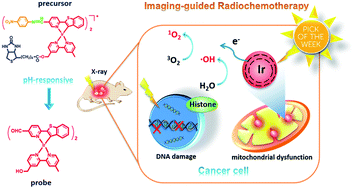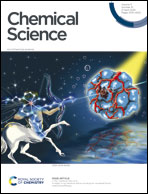A highly X-ray sensitive iridium prodrug for visualized tumor radiochemotherapy†
Abstract
Concomitant treatment of radiotherapy and chemotherapy is widely used in cancer therapy. The search for highly efficient radiochemotherapy drugs for tumor targeting therapy under image-guiding is of considerable interest. Herein we report an Ir-based prodrug Ir-NB with high sensitization efficiency for in vivo tumor microenvironment responsive cancer-targeted bioimaging radiochemotherapy. To the best of our knowledge, the sensitivity enhancement ratio (SER) of the Ir-NB prodrug is the highest among those reported for radiotherapy metal complex drugs. From detailed action mechanism study, we provide evidence that the prodrug is effectively suppresses the tumor growth through inducing mitochondrial dysfunction, and eventually amplifies the apoptotic signal pathway. This study provides an approach for the development of cancer theranostic agents for tumor radiotherapy.

- This article is part of the themed collections: 2020 ChemSci Pick of the Week Collection and 2020 Chemical Science HOT Article Collection


 Please wait while we load your content...
Please wait while we load your content...